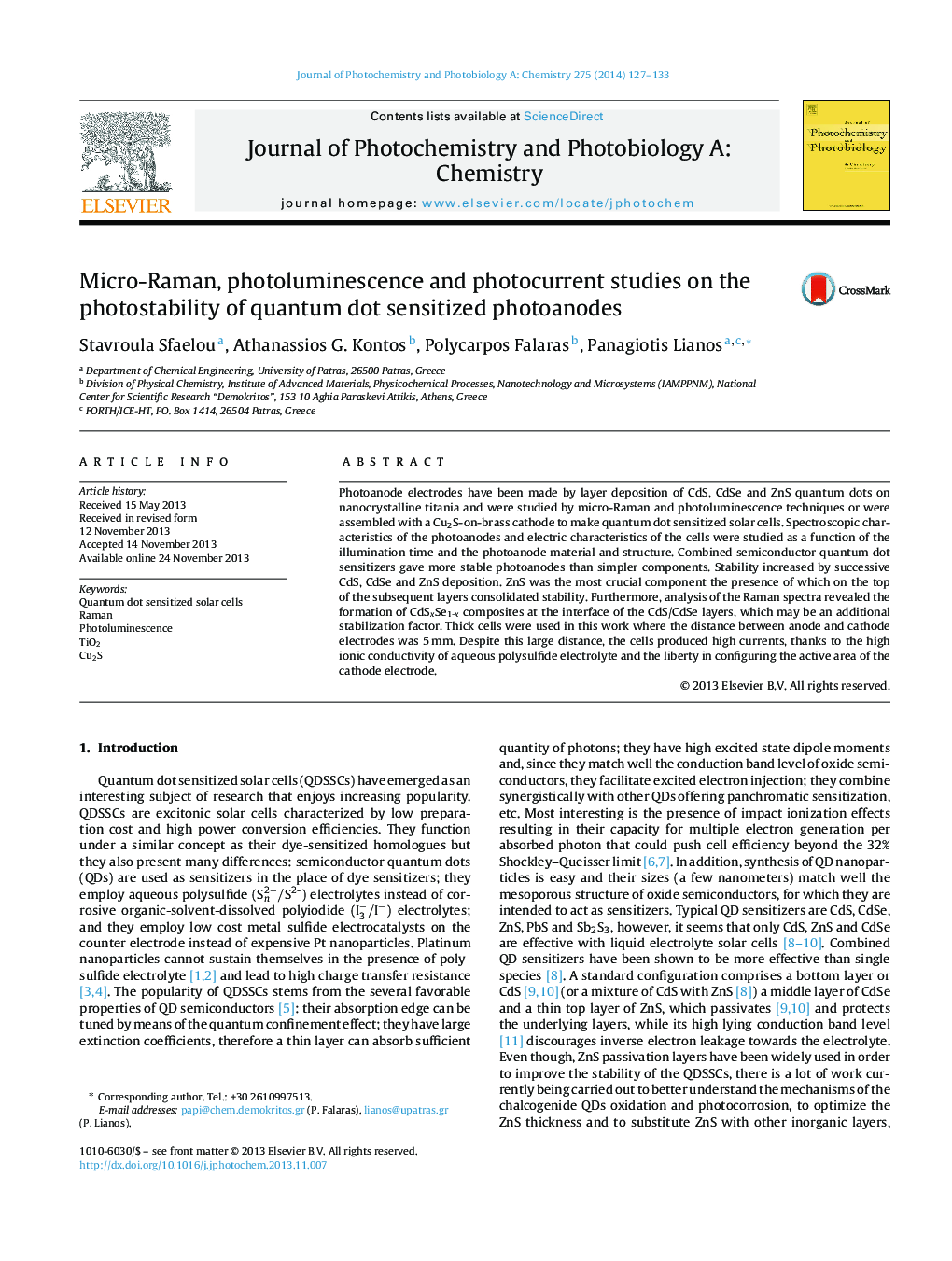| Article ID | Journal | Published Year | Pages | File Type |
|---|---|---|---|---|
| 26320 | Journal of Photochemistry and Photobiology A: Chemistry | 2014 | 7 Pages |
•Study of the stability of quantum dot sensitized photoanodes.•Micro-Raman, photoluminescence and photocurrent studies.•Importance of combination of different quantum dots and of the deposition order.•CdS, CdSe and ZnS as standard choice of quantum dot sensitizers.•Novel design of a solar cell with liberty in electrode relative sizes.
Photoanode electrodes have been made by layer deposition of CdS, CdSe and ZnS quantum dots on nanocrystalline titania and were studied by micro-Raman and photoluminescence techniques or were assembled with a Cu2S-on-brass cathode to make quantum dot sensitized solar cells. Spectroscopic characteristics of the photoanodes and electric characteristics of the cells were studied as a function of the illumination time and the photoanode material and structure. Combined semiconductor quantum dot sensitizers gave more stable photoanodes than simpler components. Stability increased by successive CdS, CdSe and ZnS deposition. ZnS was the most crucial component the presence of which on the top of the subsequent layers consolidated stability. Furthermore, analysis of the Raman spectra revealed the formation of CdSxSe1-x composites at the interface of the CdS/CdSe layers, which may be an additional stabilization factor. Thick cells were used in this work where the distance between anode and cathode electrodes was 5 mm. Despite this large distance, the cells produced high currents, thanks to the high ionic conductivity of aqueous polysulfide electrolyte and the liberty in configuring the active area of the cathode electrode.
